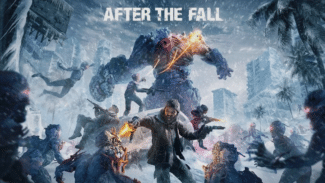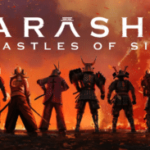Last month brought news that Vertigo Games was delaying its anticipated co-op VR shooter, After The Fall, to later in 2021.
It’s the latest in a series of delays for the title, which was first announced back in 2019. Since that time the VR landscape has changed a lot – headsets have come and gone and we’ve seen the bar for VR gaming raised. We sat down with Richard Stitselaar, Creative Director at Vertigo Games, to talk about the decision to delay the game once more, and what’s changed over the past few years of development.
UVR: Which specific areas of development are challenging with After the Fall? Is it a case that the PC version is the lead platform but porting to PSVR/Quest 2 is what’s taking time?
RS: I would vote for the multi-platform development approach, with which we are developing for three (four!) widely divergent VR platforms in parity, as the number one area that has been the most challenging and time-consuming with After the Fall.
Strictly taken, no version of After the Fall can be considered a port: all content is developed for all platforms in parity, while a core framework of VR development tools ensure the unique strengths and capabilities of each platform are leveraged (Yes, that means crispy high-end graphics on PC are possible). It also lays the groundwork for rolling out a meaty post-launch support plan to the various platforms simultaneously, so that our team can continue to expand the game world with content and features with as little platform-specific overhead as possible.
Behind the scenes, our technical team has spent close to a year building this beast of a framework on top of the Unity engine before we truly kicked off multi-platform production of After the Fall. Meanwhile, the main chunk of our development team ported Arizona Sunshine to Oculus Quest – an immense job that we spent almost as long on – the learning lessons of which we brought back into the framework afterwards. I would even go as far as to say we have developed a Unity-based VR engine layer that will serve us for future VR games as well.
UVR: Was the game always planned for release on Quest and, if not, has the port affected the original scope in any way?
RS: Originally, no. But when the Quest was announced, we realized the potential of untethered VR and made the decision to familiarize ourselves with developing for the platform by jumping into familiar territory with Arizona Sunshine. This has helped us understand the device and its unique strengths and weaknesses, before jumping in with an ambitious title such as After the Fall. We have had to be critical about our development roadmap in some areas: some features and content have been moved around on our timeline, while others have made way for new ideas. Launch has always been just the start for After the Fall however and this has meant we have made our post-launch support plan a little meatier.
UVR: This will make ATF the first game to get a Quest 2 version before a Quest 1 release – was this a decision you had to plan with Facebook?
RS: The Oculus Quest 2 was introduced midway through our development cycle, and it became apparent that the differences with the original Quest required us to re-evaluate its impact on our development approach. Facebook was very understanding and supportive of our desire to maintain the level of quality we set for ourselves. We’ve worked closely with the team at Facebook to secure that additional development time our team needs to bring After the Fall over to the original Oculus Quest properly.
UVR: How much later in the year do you expect the game to arrive?
RS: Let’s just say we are confident the rolling “After the Fall” release date joke, that our community has happily been torturing our CM with, won’t age well! Although we’re having quite a bit of fun seeing him try and come up with witty replies…
UVR: We first saw the game in summer 2019. Exactly what’s changed with the project since then?
RS: The 2019 demo is largely still a good representation of our vision for After the Fall – essentially being a sideways step from our work on the Arizona Sunshine universe – in which we have broken basically all its rules for surviving an undead apocalypse. You’re no longer saving bullets in a struggle to survive – this is a full-blown power fantasy in which you play the role of a Runner. Runners are special survivor forces who venture out into post-apocalyptic LA, take out the snowbreed, and bring back the resources required to secure mankind’s continued survival, all the while upping their skill, loadout and status within the community.
Some things did change. Aside from the changes to the development roadmap we already covered, once we had the core framework mentioned above in place, we cranked up the co-op support to 4 players in-mission as the standard for internal and external playtests. These taught us that players really enjoyed faster-paced co-op action, as they fully embraced the fantasy of being a badass running headfirst into all sorts of danger with their squad. A lot of us played games like Left 4 Dead to death back in the day, so this didn’t bother us in the slightest.
UVR: Since this announcement some have predicted the Quest version will eventually be altogether canceled. Is this a possibility?
RS: We absolutely intend to bring the game over to the original Quest and development for it has come quite a long way already. By splitting off the release of this version, we are able to spend more time on the necessary optimization for it while taking away further pressure on our development schedule for the other platforms.
UVR: Will the game’s beta be coming to all platforms? When can people expect to be able to try it out?
RS: The moment we have more details to reveal, you’ll be the first to know!





